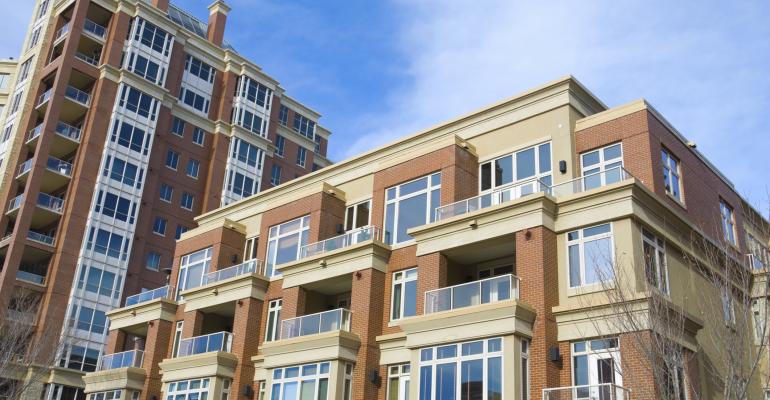Developers opened a tremendous number of new apartment units in 2017. But the percentage of apartments that are occupied has barely shifted, despite competition for potential residents. Rents continue to grow in most markets.
“Occupancy is hovering around 95 percent, and that’s a healthy rate, especially with lots of product moving through initial lease-up,” says Greg Willett, chief economist with RealPage Inc., a provider of property management and software services.
That’s good news as multifamily developers look forward to another busy year in 2018 with even more new apartment properties scheduled to open. “The onslaught of new supply is certainly testing the ability of the multifamily market to absorb incoming projects,” writes Victor Calanog, chief economist with real estate research firm Reis Inc. in his “First Glance” report for the first quarter of 2018.
If the apartment markets can survive another onslaught of new construction in 2018, the next few years should be easier, as the number of new units coming on-line drops.
Astonishing stability
Apartment property owners continued to raise rents in 2017 in response to strong occupancy rates.
“Annual rent growth figures are roughly similar to the prior year’s,” says Calanog. Effective rents grew 3.6 percent, on average, in 2017, compared to 5.8 percent in 2015, according to Reis data.
RealPage also found rent growth holding steady in 2017 compared to the year before, averaging about 2.5 percent a year. “The rent growth number hasn’t moved meaningfully for more than a year, going all the way back to late 2016,” says Willett.
So far in 2018, the occupancy rate continues to be high, weighed down only slightly by the usual effect of cold weather, which slows down apartment leasing every winter. “In early 2018 we’ve seen minor shifts in the national apartment market performance that reflect normal seasonality more than anything else,” says Willett.
As winter came to a close, the occupancy rate averaged 94.8 percent in February 2018, according to RealPage. That’s 50 basis points below the rate in September 2017. It’s also about the same drop in occupancy rates that happens every winter. “Leasing activity really drops off in October through February, occupancy typically backtracks a little bit in those cold weather months,” says Willett.
That being said, occupancy rates were a lot higher just a few years ago. Occupancy rates are “a shadow of their cyclical peak numbers from 2015,” says Calanog.
The apartment occupancy rate averaged 95.5 percent at the end of 2017, according to Reis. That’s down 30 basis points from the end of 2016, when occupancy appears to have hit its cyclical high.
More apartments coming
Leasing remains strong, even though the apartment market is absorbing a huge number of new units. Over 220,000 new apartments opened in 2017, according to Reis, which calls 2017 a “record year” and more are now on the way.
“The following 12 months may be an even bigger year for inventory growth in the apartment market,” says Calanog.
The strength of the broader U.S. economy is helping to support the apartment market. “Both job production and income growth are coming in during early 2018 at levels perhaps a bit stronger than most were expecting,” says Willett. “Those factors suggest the potential for strong apartment demand once the spring leasing season gets going.”
The tax reform passed earlier this year may be helping support some economic activity. “It’s almost a license to increase rents—tax reform has put some discretionary income back in people’s pockets,” says Doug Ressler. director of business intelligence for commercial real estate data firm Yardi-Matrix.
“A gradual rate of monetary policy normalization, combined with February’s largest gain in residential construction employment in more than a year (a 25,000 payroll increase out of a 61,000 total construction payroll gain), should help the housing market,” says Doug Duncan, chief economist at Fannie Mae.





